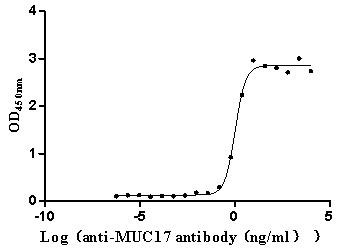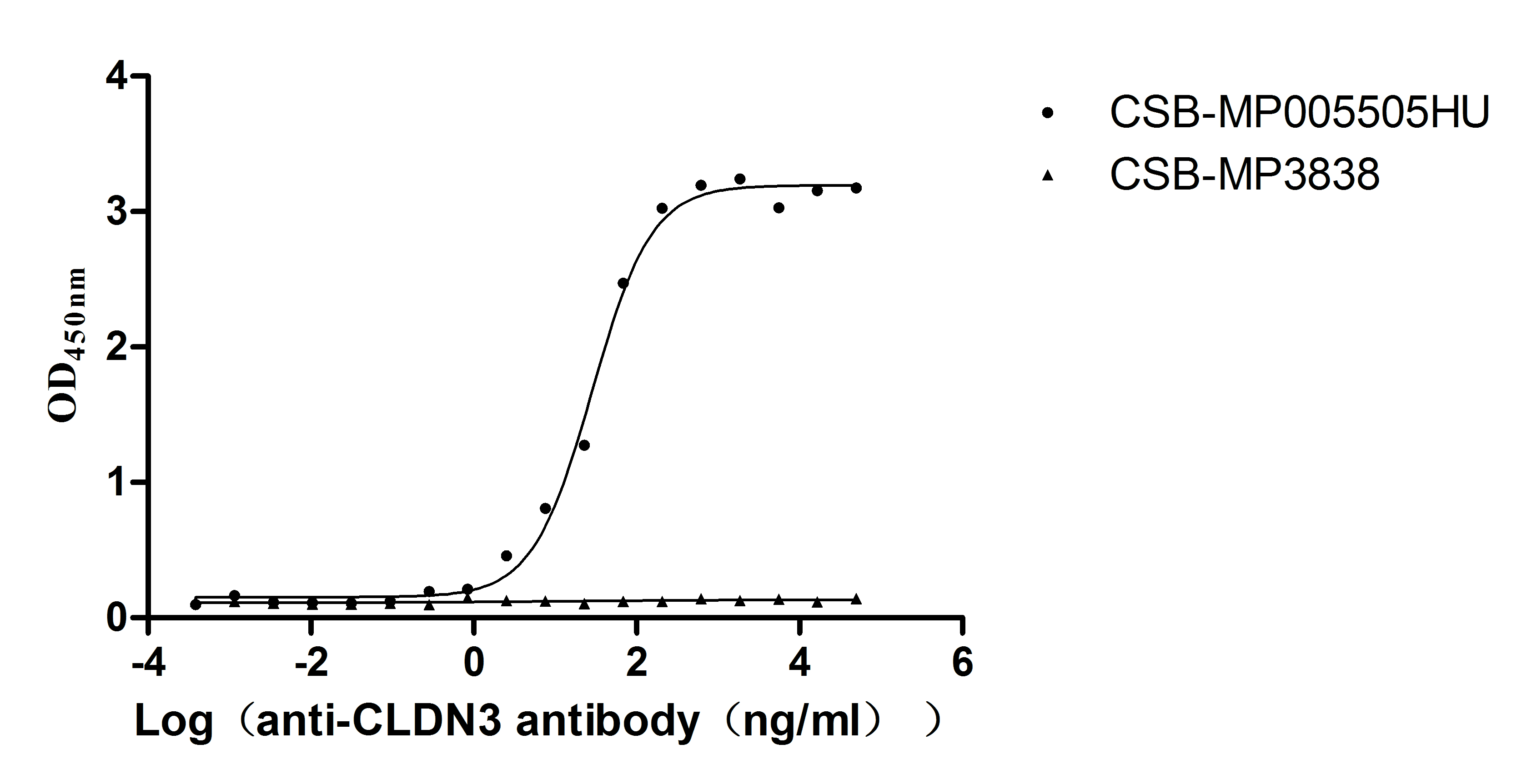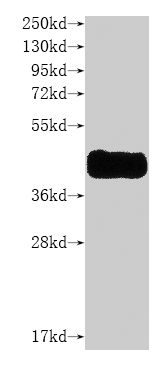Recombinant Saccharomyces cerevisiae Flocculation protein FLO1 (FLO1), partial
-
中文名稱:釀酒酵母FLO1重組蛋白
-
貨號:CSB-YP330196SVG
-
規(guī)格:
-
來源:Yeast
-
其他:
-
中文名稱:釀酒酵母FLO1重組蛋白
-
貨號:CSB-EP330196SVG
-
規(guī)格:
-
來源:E.coli
-
其他:
-
中文名稱:釀酒酵母FLO1重組蛋白
-
貨號:CSB-EP330196SVG-B
-
規(guī)格:
-
來源:E.coli
-
共軛:Avi-tag Biotinylated
E. coli biotin ligase (BirA) is highly specific in covalently attaching biotin to the 15 amino acid AviTag peptide. This recombinant protein was biotinylated in vivo by AviTag-BirA technology, which method is BriA catalyzes amide linkage between the biotin and the specific lysine of the AviTag.
-
其他:
-
中文名稱:釀酒酵母FLO1重組蛋白
-
貨號:CSB-BP330196SVG
-
規(guī)格:
-
來源:Baculovirus
-
其他:
-
中文名稱:釀酒酵母FLO1重組蛋白
-
貨號:CSB-MP330196SVG
-
規(guī)格:
-
來源:Mammalian cell
-
其他:
產(chǎn)品詳情
-
純度:>85% (SDS-PAGE)
-
基因名:FLO1
-
Uniprot No.:
-
別名:FLO1; FLO2; FLO4; FLO8; YAR050WFlocculation protein FLO1; Flocculin-1
-
種屬:Saccharomyces cerevisiae (strain ATCC 204508 / S288c) (Baker's yeast)
-
蛋白長度:Partial
-
蛋白標(biāo)簽:Tag?type?will?be?determined?during?the?manufacturing?process.
The tag type will be determined during production process. If you have specified tag type, please tell us and we will develop the specified tag preferentially. -
產(chǎn)品提供形式:Lyophilized powder
Note: We will preferentially ship the format that we have in stock, however, if you have any special requirement for the format, please remark your requirement when placing the order, we will prepare according to your demand. -
復(fù)溶:We recommend that this vial be briefly centrifuged prior to opening to bring the contents to the bottom. Please reconstitute protein in deionized sterile water to a concentration of 0.1-1.0 mg/mL.We recommend to add 5-50% of glycerol (final concentration) and aliquot for long-term storage at -20℃/-80℃. Our default final concentration of glycerol is 50%. Customers could use it as reference.
-
儲存條件:Store at -20°C/-80°C upon receipt, aliquoting is necessary for mutiple use. Avoid repeated freeze-thaw cycles.
-
保質(zhì)期:The shelf life is related to many factors, storage state, buffer ingredients, storage temperature and the stability of the protein itself.
Generally, the shelf life of liquid form is 6 months at -20°C/-80°C. The shelf life of lyophilized form is 12 months at -20°C/-80°C. -
貨期:Delivery time may differ from different purchasing way or location, please kindly consult your local distributors for specific delivery time.Note: All of our proteins are default shipped with normal blue ice packs, if you request to ship with dry ice, please communicate with us in advance and extra fees will be charged.
-
注意事項:Repeated freezing and thawing is not recommended. Store working aliquots at 4°C for up to one week.
-
Datasheet :Please contact us to get it.
靶點詳情
-
功能:Cell wall protein that participates directly in adhesive cell-cell interactions during yeast flocculation, a reversible, asexual and Ca(2+)-dependent process in which cells adhere to form aggregates (flocs) consisting of thousands of cells. The lectin-like protein sticks out of the cell wall of flocculent cells and selectively binds mannose residues in the cell walls of adjacent cells. Activity is inhibited by mannose, but not by glucose, maltose, sucrose or galactose. Also involved in cell-substrate adhesion.
-
基因功能參考文獻(xiàn):
- Sas3 and Ada2-dependent histone H3 acetylation is required for transcription elongation at the de-repressed FLO1 gene. PMID: 28115623
- expression of FLO5 gene was higher than that of FLO1 gene PMID: 25218464
- Deletion of tandem repeats B, C and D adjacent to the 3'-terminal of FLO1 increases the conformation of flocculin in response to changes of pH and temperature. PMID: 24697100
- Expression of Lg-FLO1, which is required for flocculation of bottom-fermenting yeast, was also found to be induced by starvation for nitrogen. PMID: 23065862
- Repeated DNA sequence of FLO1 is important for the control of flocculation and genetic stability. PMID: 23383507
- N-terminal domain of Flo1p contains two mannose carbohydrate binding sites with different affinities PMID: 21076009
- The results indicate that FLONL and FLONS are both derived forms of the FLO1 gene; genetic variability triggered by tandem repeats in FLO1 gene is believed to be responsible for the differential phenotypic properties of the yeast strains YTS-S and YTS-L. PMID: 17662052
- FLONS, conferring NewFlo-type flocculation ability in yeast was cloned and The 3,396-bp ORF encoded a peptide of 1,132 amino acids with high identity to Flo1 protein PMID: 18057865
- FLO1 is a variable green beard gene that drives biofilm-like cooperation in budding yeast PMID: 19013280
- The authors describe the discovery of an extracellular matrix produced by FLO1-expressing Saccharomyces cerevisiae cells. PMID: 19207290
顯示更多
收起更多
-
亞細(xì)胞定位:Cell membrane; Lipid-anchor, GPI-anchor. Secreted, cell wall. Note=Identified as GPI-anchored plasma membrane protein (GPI-PMP) as well as covalently-linked GPI-modified cell wall protein (GPI-CWP) in the outer cell wall layer.
-
蛋白家族:Flocculin family
-
數(shù)據(jù)庫鏈接:
KEGG: sce:YAR050W
STRING: 4932.YAR050W
Most popular with customers
-
Recombinant Human Angiotensin-converting enzyme 2 (ACE2), partial (Active)
Express system: Mammalian cell
Species: Homo sapiens (Human)
-
Recombinant Human Tissue factor pathway inhibitor (TFPI), partial (Active)
Express system: Mammalian cell
Species: Homo sapiens (Human)
-
Recombinant Dog Angiopoietin-2 (ANGPT2) (Active)
Express system: Mammalian cell
Species: Canis lupus familiaris (Dog) (Canis familiaris)
-
Recombinant Mouse Claudin-18.2 (Cldn18.2)-VLPs (Active)
Express system: Mammalian cell
Species: Mus musculus (Mouse)
-
Recombinant Human V-set and immunoglobulin domain-containing protein 4 (VSIG4), partial (Active)
Express system: Mammalian cell
Species: Homo sapiens (Human)
-
Recombinant Human Mucin-17 (MUC17), partial (Active)
Express system: Mammalian cell
Species: Homo sapiens (Human)
-
Recombinant Human Claudin-3 (CLDN3)-VLPs (Active)
Express system: Mammalian cell
Species: Homo sapiens (Human)
-
Recombinant Human C-C chemokine receptor type 8 (CCR8)-VLPs (Active)
Express system: Mammalian cell
Species: Homo sapiens (Human)


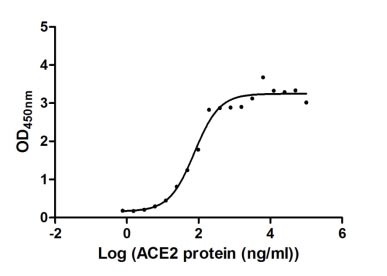
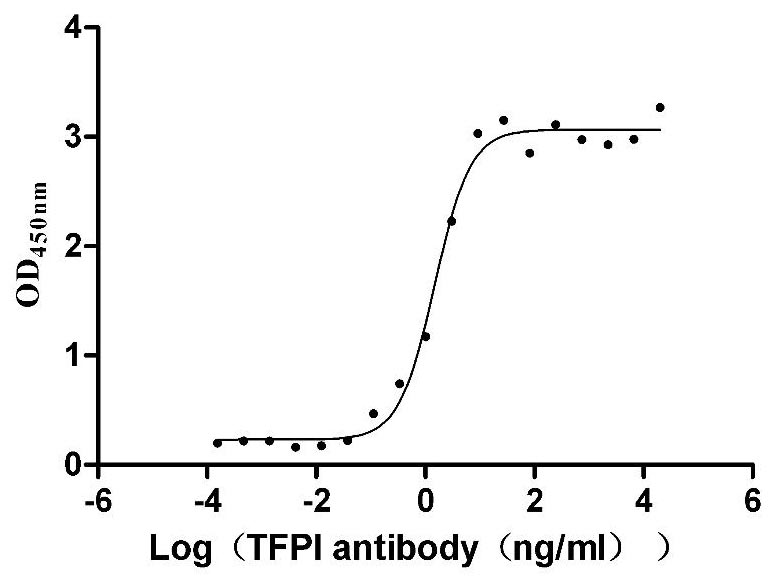
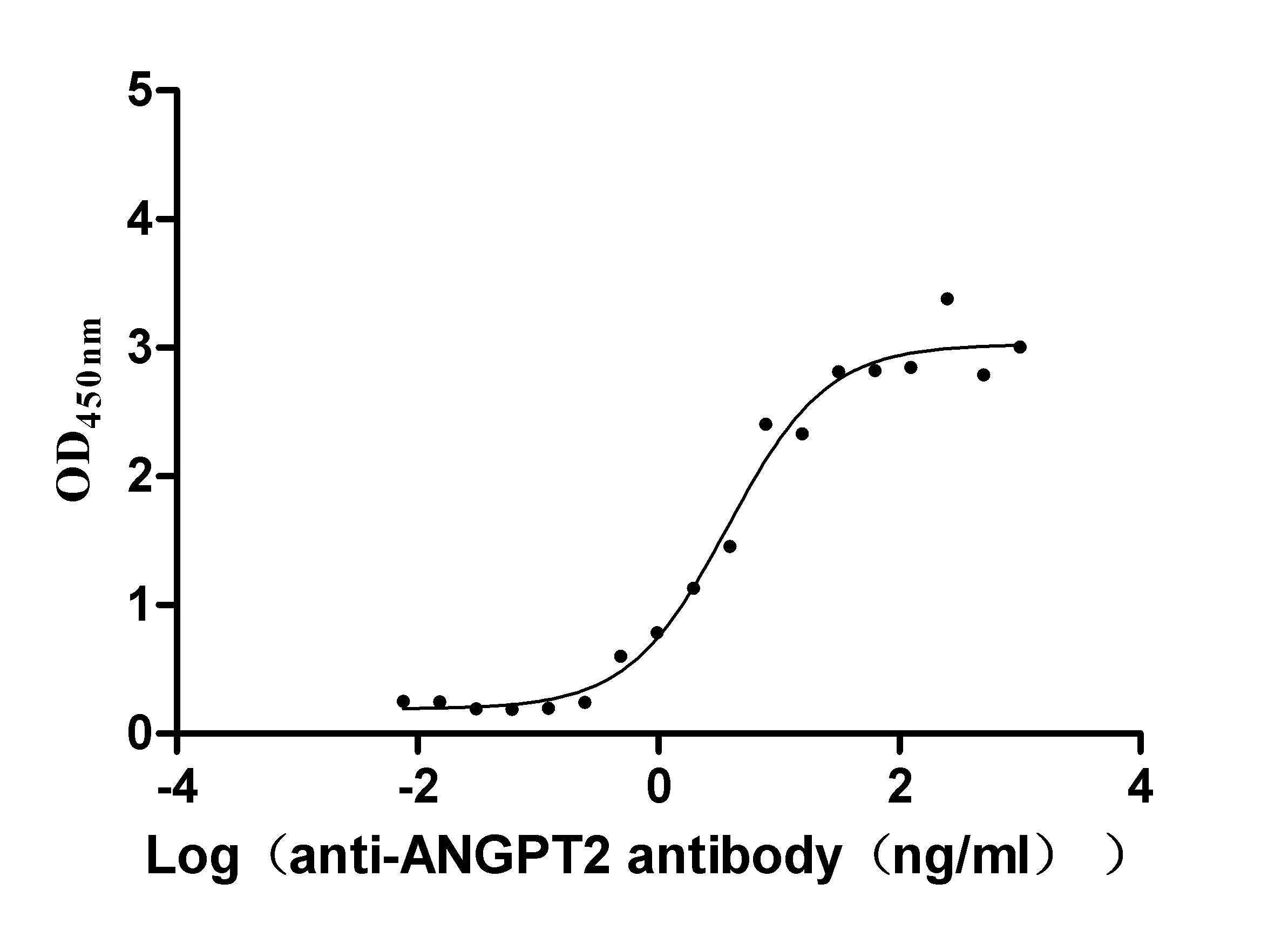
-AC1.jpg)

